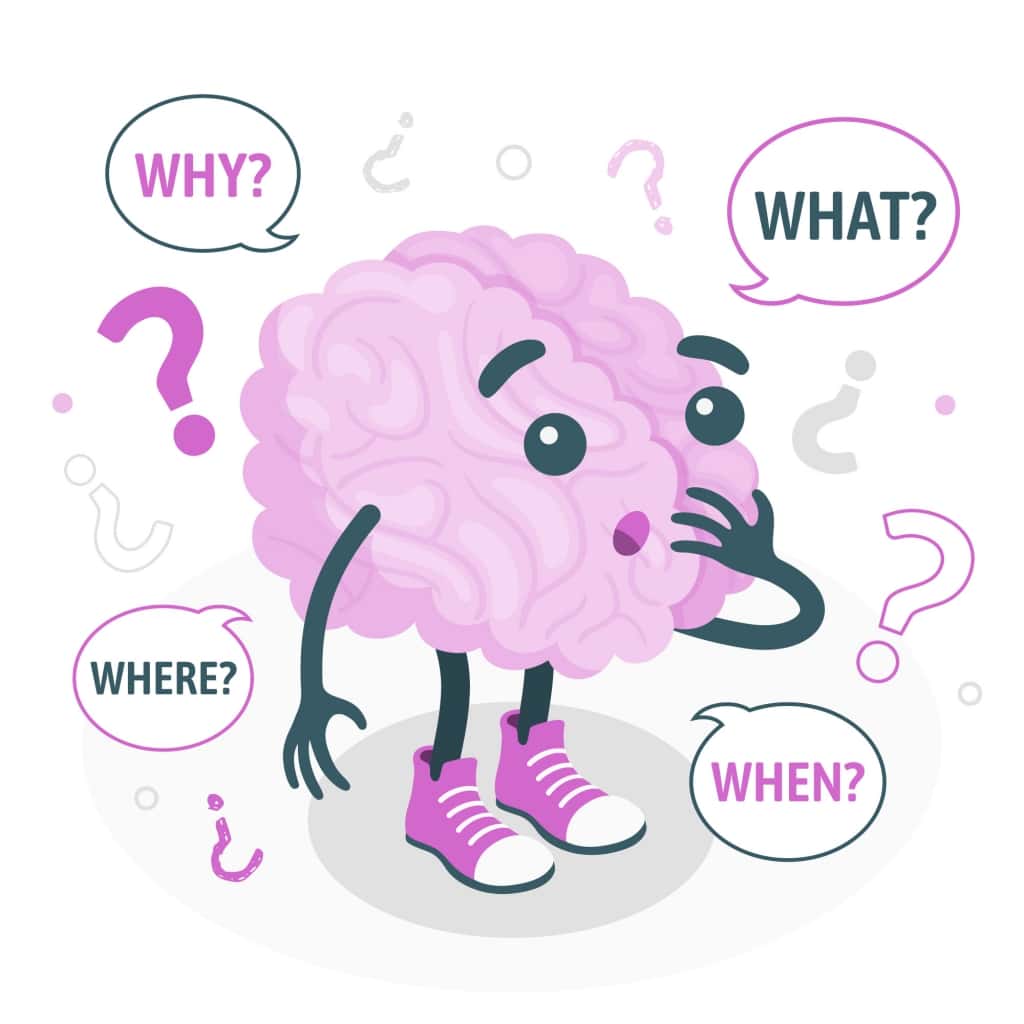Your brain isn’t set in stone; it has the power to change. This adaptability, known as neuroplasticity, is crucial for cognitive function, memory, and emotional well-being. In this blog post, we’ll explore how neuroplasticity exercises work, and ways to incorporate neuroplasticity exercises into your daily routines to harness the brain’s incredible potential.
Table Of Contents
- What Is Neuroplasticity?
- Why Does Neuroplasticity Need To Exercise?
- How Do Neuroplasticity Exercises Work?
- Top Neuroplasticity Exercises for Every Life & Different Conditions
- Key Takeaways
- FAQs
Mind-Boosting Games
What is Neuroplasticity?
Neuroplasticity, also known as brain plasticity, is the ability of our brains to change and adapt throughout our lives. It’s like the brain is constantly rewiring itself in response to new experiences, learning, and even injury. This means that our brains are not fixed and unchanging, but rather dynamic and ever-evolving.
- Picture your brain like a busy web with lots of connected paths. Every time you think, learn something new, or pick up a skill, it’s like adding new links or making the existing ones stronger. Neuroplasticity is like the manager of this process, making sure that your brain keeps rewiring itself. This means your brain can change its structure based on what you learn, your experiences, and what’s happening around you. It’s like giving your brain the ability to adapt and grow.

Why Does Neuroplasticity Need To Exercise?
Neuroplasticity needs exercise because, like any other part of the body, the brain benefits from regular workouts. Here’s why giving your brain a mental fitness routine is crucial:
- Enhanced Learning Abilities: Neuroplasticity exercises promote flexibility in the brain, making it easier to learn new things. It’s like a mental warm-up that primes your brain for absorbing and processing information effectively.
- Improved Memory Function: Engaging in neuroplasticity exercises strengthens the connections between neurons. This reinforcement enhances your memory, helping you remember and recall information more efficiently.
- Recovery: Neuroplasticity exercises act as a form of rehabilitation, helping the brain adapt and regain functionality after trauma.
- Adaptation to Change: Life is full of changes, and neuroplasticity exercises prepare your brain to adapt. It’s like giving your brain a workout routine that keeps it nimble and ready to handle new situations.
- Positive Impact on Mood: Certain neuroplasticity exercises, especially those designed for conditions like anxiety and depression, can positively impact your mood. They act as a mental wellness routine, contributing to emotional well-being.
- Creation of New Neural Pathways: Neuroplasticity exercises create new connections in your brain. This process opens up fresh avenues for thoughts and experiences, fostering creativity and innovation.

How Do Neuroplasticity Exercises Work?
How do neuroplasticity exercises function? Researchers highlight three key elements for maintaining “plasticity” in the brain: challenge, novelty, and focused attention.
1. Novelty:
Exposing your brain to new experiences and activities is like introducing it to unexplored territories in its internal landscape. This triggers the creation of new neural pathways, akin to building new roads in your brain city. These fresh connections allow for more efficient information processing, enhanced learning, and increased creativity.
2. Challenge:
Stepping outside your comfort zone and engaging in mentally demanding tasks strengthens existing neural connections, similar to how regularly used roads become wider and smoother.
Think of it as reinforcing bridges between neurons, leading to improved memory, sharper focus, and better problem-solving skills.
3. Engagement:
Engaging in activities that challenge your mind, such as playing music or having thought-provoking conversations, can help keep your brain’s synapses active. This ensures that the important connections in your brain remain strong and functional, much like maintaining a steady flow of traffic on a busy road.
Whether it’s playing music, having a stimulating conversation, or simply practicing mindfulness, focused attention keeps your brain engaged and its connections strong. By doing so, you can prevent your brain’s pathways from becoming neglected or weak.
Top Neuroplasticity Exercises for Every Life & Different Conditions
Here are simple and effective neuroplasticity exercises you can incorporate into your daily routine and different conditions:
Neuroplasticity Exercises For Anxiety
- Mindfulness and meditation: Focusing on the present moment and calming your breath can help break the cycle of anxious thoughts and build emotional regulation.
- Progressive muscle relaxation: Tensing and relaxing muscle groups progressively helps reduce physical tension and anxiety.
- Deep breathing exercises: Slow, deep breaths activate the parasympathetic nervous system, promoting relaxation and counteracting anxiety.

Neuroplasticity Exercises To Create New Neural Pathways
- Learning a new skill: Whether it’s a language, instrument, dance, or coding, learning something new forces your brain to build new connections.
- Playing brain games and puzzles: Puzzles, crosswords, memory games, and strategy games challenge your brain in different ways, encouraging the formation of new neural pathways.
- Taking different routes: Exploring new places and breaking your routine exposes your brain to new stimuli and promotes adaptation.
- Engaging in social activities: Conversation, shared experiences, and new perspectives stimulate your brain and create new neural connections.
Ready for a Puzzle Adventure?
- Different Types of Puzzle | Can You Solve All Of Them?
- Best Online Crossword Puzzles
- Free Word Search Games
Neuroplasticity Exercises For Brain Injury
- Physical therapy: Specific exercises can help rehabilitate damaged brain areas and rebuild lost function.
- Occupational therapy: Learning new skills and adapting to daily tasks can help rewire the brain and compensate for deficits.
- Speech therapy: Re-learning language skills can stimulate brain plasticity and rebuild neural pathways.
- Cognitive rehabilitation: Activities like memory games and attention training can help improve cognitive function after brain injury.
Neuroplasticity Exercises For Tinnitus
- Cognitive-behavioral therapy (CBT): CBT can help manage negative thoughts and emotions associated with tinnitus, reducing its impact on your life.
- Relaxation techniques: Deep breathing, meditation, and yoga can help reduce stress and anxiety, which can worsen tinnitus symptoms.
- Music therapy: Listening to calming music can mask tinnitus and promote relaxation.
Neuroplasticity Exercises For Depression
- Exercise: Physical activity releases endorphins, which have mood-boosting effects, and can help stimulate neuroplasticity in brain regions associated with depression.
- Journaling and gratitude exercises: Focusing on positive aspects of your life and expressing gratitude can help rewire negative thinking patterns and boost mood.
- Social interaction: Spending time with loved ones and engaging in social activities can combat feelings of isolation and improve emotional well-being.

Neuroplasticity Exercises Free
- Meditation apps: Many free apps offer guided meditation and mindfulness exercises.
- Online brain training games: Websites and apps offer various free brain training games and puzzles.
- Public libraries: Libraries often have access to audiobooks, online learning resources, and community events that can stimulate your brain.
- Nature walks: Immersing yourself in nature can be calming and help reduce stress, while also providing new sights and sounds for your brain to process.
Key Takeaways
These simple yet impactful activities—whether learning a new skill, changing your routine, playing brain games, enjoying social interactions, or practicing mindfulness—play a crucial role in keeping your neural pathways flexible and resilient.

To make this journey even more engaging, consider using AhaSlides in your routine. AhaSlides templates can add an interactive and fun dimension to your neuroplasticity exercises. Whether it’s quizzes, polls, or interactive presentations, AhaSlides can enhance your learning experience and make the process even more enjoyable.
FAQs
What is the best exercise for neuroplasticity?
No single “best” exists! Choose activities that bring novelty, challenge, and engagement, like learning a new skill, playing games, or exploring new places.
What are 3 methods shown to improve neuroplasticity?
- Challenge Yourself: Learn a new language, solve puzzles, and tackle complex tasks.
- Embrace Novelty: Take different routes, explore new hobbies, and meet new people.
- Stay Engaged: Practice mindfulness, play social games, and actively listen in conversations.
How can I improve my neuroplasticity naturally?
Exercise, sleep, and socializing are key for brain health and growth.
Ref: Verywellmind | PsychCentral | Healthline | National Library of Medicine | Science Direct



